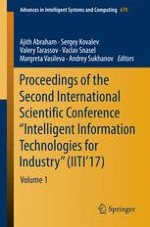This volume of Advances in Intelligent Systems and Computing highlights key scientific achievements and innovations in all areas of automation, informatization, computer science, and artificial intelligence. It gathers papers presented at the IITI 2017, the Second International Conference on Intelligent Information Technologies for Industry, which was held in Varna, Bulgaria on September 14–16, 2017. The conference was jointly co-organized by Technical University of Varna (Bulgaria), Technical University of Sofia (Bulgaria), VSB Technical University of Ostrava (Czech Republic) and Rostov State Transport University (Russia). The IITI 2017 brought together international researchers and industrial practitioners interested in the development and implementation of modern technologies for automation, informatization, computer science, artificial intelligence, transport and power electrical engineering. In addition to advancing both fundamental research and innovative applications, the conference is intended to establish a new dissemination platform and an international network of researchers in these fields.
